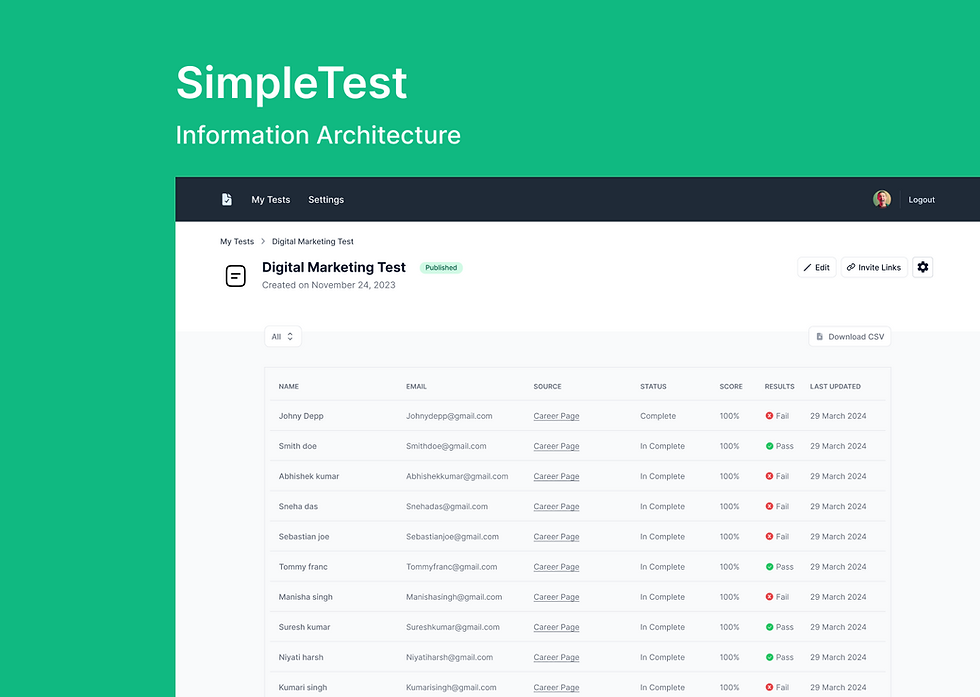Information Architecture: Structuring SimpleTest
- Ak Giri
- Feb 18
- 2 min read
Defining IA
At SimpleTest, my team and I have worked closely to structure an Information Architecture (IA) that makes skill assessments seamless for recruiters, educators, and candidates. We focus on simplifying workflows, ensuring scalability, and keeping the platform intuitive as it evolves.

Our Goal
Simplify complexity: Recruiters and educators have busy schedules; our IA ensures they spend less time managing assessments and more time on core tasks.
Support scalability: As SimpleTest evolves, our IA principles help us introduce new features without disrupting usability.
Create consistency: Whether users create or take tests, they should experience a coherent, predictable interface.
IA Principles
1. Clear Navigation & Wayfinding
Users should always know where they are and what actions they can take. We ensure this through:
Multiple navigation schemes:
Primary navigation: Dashboards for recruiters and candidates.
Contextual navigation: Links to relevant features (e.g., test settings, reports).
Utility navigation: Quick access to account settings, notifications, and help.
Task-based navigation: Users can create, manage, and analyze tests without unnecessary steps.
Progress indicators: Candidates can track their test completion, reducing anxiety and improving focus.
2. Single Source of Truth with Multiple Access Points
Different users have different workflows. To support them:
Test creation and management live in the recruiter’s dashboard, but key information (e.g., test status, invitations) is accessible across multiple touchpoints.

Candidates’ test experience is streamlined, with only the necessary tools visible to avoid cognitive overload.

AI-generated questions and Personalized Screening Tests ensure content is tailored while maintaining a structured format.

3. Reducing Information Overload
We avoid overwhelming users by implementing:
Progressive disclosure: Test details are revealed step-by-step. Recruiters see high-level summaries before accessing in-depth analytics.


Test Invites & Role-based Access: Ensure recruiters can control access without cluttering their dashboards.
Smart Categorization: Questions allow large tests to be broken into manageable chunks. Global Timers ensure clarity on time constraints.

4. Scalability & Future-Proofing
Modular dashboard design: Allows for future features (e.g., new test types) without UI disruptions.
Customizable assessment flows: Recruiters can tailor tests while following a consistent structure.
Cross-device compatibility: Ensures a seamless experience across mobile and desktop.
By prioritizing these IA principles, SimpleTest improves navigation and information access, making skill assessments easier for recruiters and candidates.